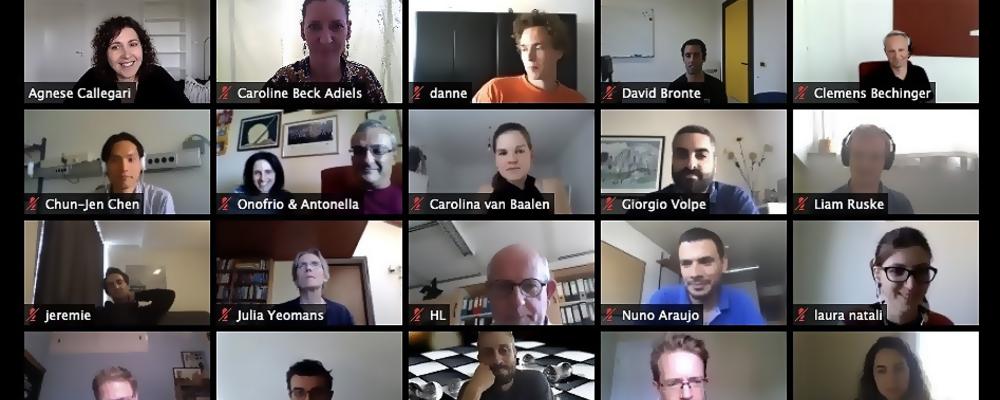
- Solariton: Solar thermal windows
- Micro-mechanical modelling of short fiber composites
- Path dependent mechanical behavior of short fiber composites
- Predicting cancer tumor position in a liver
- Optical Society student chapter at the University of Gothenburg
- Liver-on-chip for drug discovery and personalized medicine
- Diagnosing genetic disease using AI
Collaborative projects
Many of our researchers at the Department of Physics are involved in interdisciplinary collaboration, finding new and exciting ways in which the field of physics can elevate and influence across a wide array of scientific fields. On this page you will find information on several such projects initiated by or associated with scientists from the department.
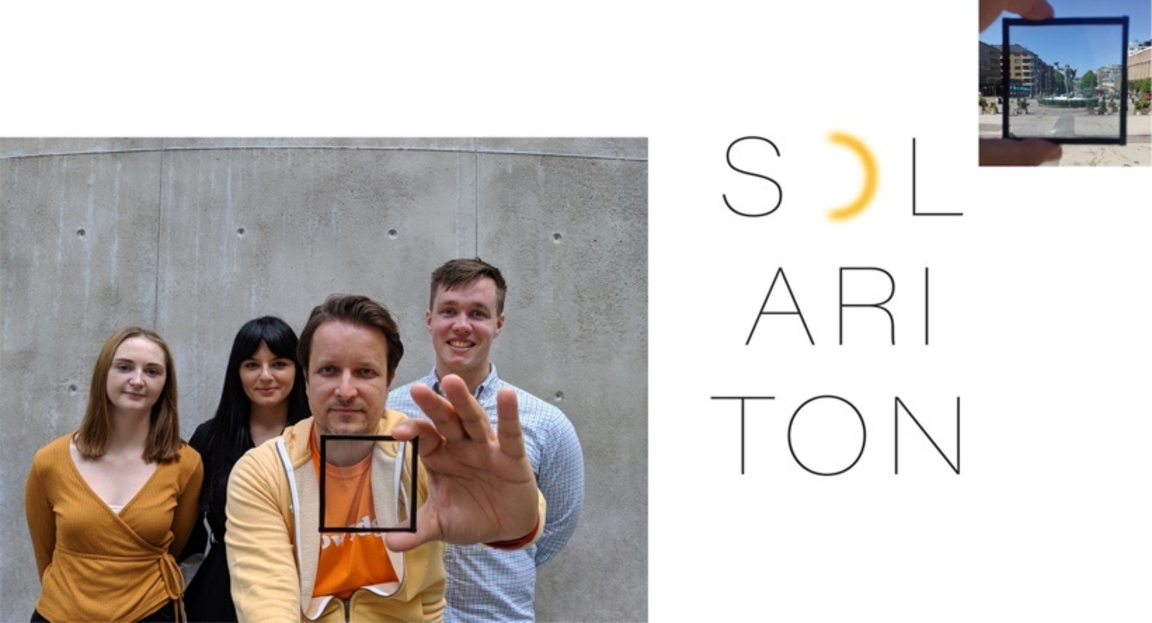
Solariton: Solar thermal windows
What is the project about?
Alexandre Dmitriev, professor in Physics: "We use nanoantennas on regular glass windows to make them warm-up using sunlight. The glass stays transparent and doesn’t change the color of the sunlight, it is color-neutral. Solariton was a Chalmers School of Entrepreneurship project in 2019-2020."
Why is it important?
Alexandre Dmitriev: "Passively warming up windows and other large glass facades can have a tremendous effect on a building's thermal balance and can save a lot of energy on heating. It also greatly improves the comfort inside – sitting next to a warm window is much more physically pleasant compared to sitting next to a cold glass surface. Warm windows also do not ice or fog over, which has many applications, for example in the car industry. Passively managing heat by glass windows can also have an impact on industrial solar heaters."
Tell us something fun or exciting that has been achieved thanks to the project!
Alexandre Dmitriev: "Solariton was named the winner of Göteborg Energi People's Choice Award 2019! The project has also received new financing from Vinnova in 2023 to help it move towards the creation of a commercial product."
Learn more about Solariton
- New financing for solar windows – technology that could boost national energy r… (External link)
- New Windows Heat Buildings Instead of Wasting Energy (External link)
- Passive solar windows heat up in cold weather (External link)
- Hållbarhetsstipendium Tänk:Om (External link)
- Contact Alexandre Dmitriev (External link)
- Article in Science Faculty Magazine (External link)
Micro-mechanical modelling of short fiber composites
Mohsen Mirkhalaf, associate senior lecturer: "This is a collaborative project between the University of Gothenburg, Chalmers University of Technology, and Aachen University of Technology (Germany). In this project, we are investigating the effect of fiber length and matrix-fiber interface strength on the mechanical behavior of short fiber composites. With the developed model, effects of wide variety of micro-structural parameters on the macroscopic behavior of these materials can be investigated."
Path dependent mechanical behavior of short fiber composites
Mohsen Mirkhalaf: "This project is a collaboration between the University of Gothenburg, Chalmers University of Technology, and Eindhoven University of Technology (Netherlands). In this project, we are working on predicting path dependent elasto-plastic behavior of short fiber reinforced composites using micro-mechanics and Deep Neural Networks (DNN). The developed DNN model will be fast and provide an opportunity of computationally efficient multi-scale simulations."
Predicting cancer tumor position in a liver
Mohsen Mirkhalaf: "In this project, researchers from the University of Gothenburg, Netherlands Cancer Institute (Netherlands), and University of Stavanger (Norway) collaborate. We are using Finite Element Analysis and Deep Neural Networks to develop a model which can predict the position of a cancer tumor in a liver. The ultimate goal of this project is to develop a tool which help surgeons to spot a cancer tumor during a surgery."
Learn more
Optical Society student chapter at the University of Gothenburg
What is the project about?
Laura Perez Garcia, PhD-student in Physics: "We are a group of PhD-students at Gothenburg University that are interested in developing and engaging in outreach and networking activities. We do this with the help of the student chapter network from the Optical of Society, which helps us organize the events, provide us with didactic materials, and with part of the funding. We are encouraged to organize seminars, career seminars, congresses for students (organized by students). On the outreach aspect, we organize activities for the general public, bringing awareness of the importance of optics and photonics technologies in the development of our day to day."
Why is it important?
Laura Perez Garcia: "OSA student chapters form a network of about 370 groups worldwide; in Sweden, we have three chapters; one in Lund University, another in KTH University at Stockholm, and ours at Gothenburg University. This kind of organization allows us to generate valuable opportunities for our professional development and foster lasting relationships between peers and mentors.
It also helps us to bring visibility to the work we are doing to the society, and why it is essential to support science in general, also it can help individuals from the community realize how optics and photonics technologies can improve their quality of life and the wellbeing of our planet."
Tell us something fun or exciting that has been achieved thanks to the project!
Laura Perez Garcia: "We have had some meetings where we organized our first activities; see the screenshot below of our first meeting. We wanted to start the chapter with a physical meeting, but due to the pandemic, we decided to begin remotely and don’t delay this project anymore. We think that the limitations of the COVID crisis don’t necessarily mean that everything has to stop and can actually be an opportunity for having diverse activities online."
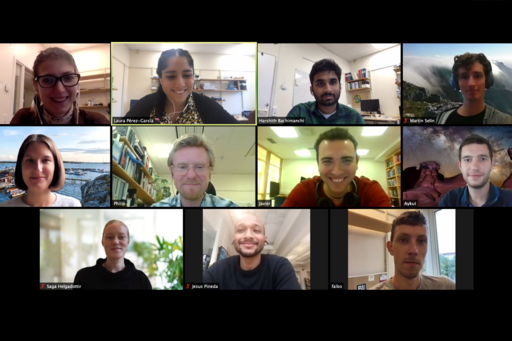
Learn more about OSA-GU Student Chapter
Contact
Liver-on-chip for drug discovery and personalized medicine
What is the collaboration about?
Caroline Beck Adiels, Senior Lecturer in Biophysics: "In a research collaboration with Giovanni Volpe, and Stefano Romeo at Sahlgrenska Academy we jointly received funding from the Swedish Foundation for Strategic Research to develop an artificial liver tissue on chip that mimics both the architecture and function of human liver. To succeed we rely on the interdisciplinary orientation of the team and work closely with a pharmaceutical company.”
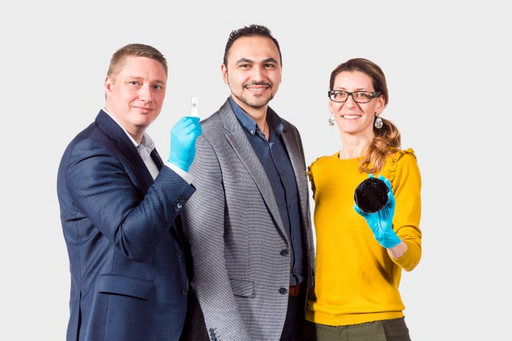
Why is it important?
Caroline Beck Adiels: "The human liver is critical to health and has a pivotal role in energy utilization and pharmaceutical breakdown. However, metabolic diseases affecting the liver is growing fast. The most common liver disorder is called nonalcoholic fatty liver disease, which affects 17–46% of adults and if not treated often progresses to fatal scenarios. Unfortunately, specific pharmaceutical treatments for NAFLD are still lacking and many drugs lead to liver toxicity. This toxicity is often discovered very late, or even too late, after the drugs are on the market, because a realistic in vitro model of the human liver tissue is still missing.”
Tell us something fun or exciting that has been achieved thanks to the collaboration!
Caroline Beck Adiels: "We have established a patent of an organ-on-chip device and are currently investigating possible routes on how to continue. This work is very interesting, enriching and different from the traditional academic work routine. The collaboration per see has also opened up for several new projects with the potential ending up as entrepreneurial activities, being both accessible and utilized outside the academic setting.”
Diagnosing genetic disease using AI
What is the collaboration about?
Saga Helgadóttir, PhD-student in Physics:
"In a research collaboration with Sahlgrenska Academy we developed an algorithm based on machine learning to predict the probability that a person has a common genetic disease (Familial Hypercholesterolemia or FH), using only a few variables obtained from a simple blood test. Now, we are developing the results of our research into a software product of a start-up company (iflai) in collaboration with business students from Chalmers School of Entrepreneurship and the pre-accelerator Chalmers Ventures."
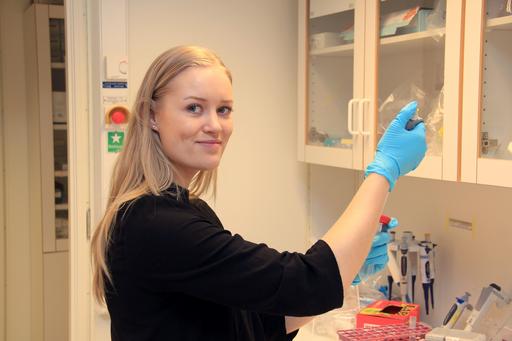
Why is it important?
Saga Helgadottir: "FH causes very high levels of cholesterol in the blood which in turn leads to a risk for early cardiovascular diseases and reduced life expectancy. The disease is manageable with medication if a correct diagnosis is made early enough. However, only about 18% of affected persons have the diagnosis. Our software is easy to use and can be used by every general health practitioner in Sweden and hopefully around the world."
Tell us something fun or exciting that has been achieved thanks to the collaboration!
Saga Helgadottir: "We have had the opportunity to get an insight in the world of entrepreneurship and see the potential of applying our research to solve real-world problems. We have also received interest from a large pharmaceutical company to collaborate on the development and distribution of our software and we are in the process of getting a CE marking to ensure the safety of our product!"